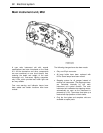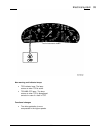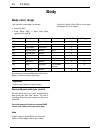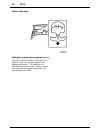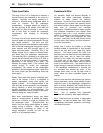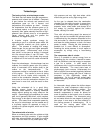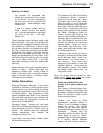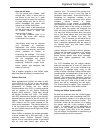
100 Signature Technologies
9-3
Why use Turbocharging?
Turbocharging is a typical Swedish concept.
The use of 4-cylinder engines provides far better
fuel economy than 6 or 8-cylinder engine. The
fact that we can achieve ample power out of the
smaller 4-cylinder engines is a testament to our
ingenuity. There are also tax implications in
Europe, which are more favorable if you own a
vehicle that has a lower displacement engine.
The process also has its use in aircraft
technology, which we find relevant to implement
into our vehicles as a cornerstone of our brand.
Trionic Engine Management
The Trionic system is called “Tri” because it
originally simultaneously controlled three engine
functions: ignition timing, fuel injection and boost
pressure (beginning with the 1999 9-5 and 2000
9-3, Trionic also controls the electronic throttle).
One clear benefit of controlling these functions is
reduced emissions: with Trionic, both exhaust
emissions and fuel consumption are reduced to
the point that they conform with the most
rigorous emission standards in the U.S.
Serving as the main sensors required to gather
information about the combustion process, the
spark plugs constitute one of the latest
improvements of the Saab Trionic Engine
Management System. A low voltage across the
electrodes continuously senses combustion
conditions within the chamber, where the actual
combustion occurs.
This eliminates the need for a separate knock
sensor. This is possible because the Saab
Direct Ignition (DI) system is integrated into the
Trionic system. Earlier systems used a separate
knock sensor to detect engine knocks, which
may occur due to variations in fuel quality. It
worked like a microphone mounted to the engine
block, but its sensing function could become
erratic in the case of other mechanical clatter in
the engine.
The “brain” of the Saab Trionic Engine
Management System is a powerful
microprocessor. The processor is 32 bits wide
and is capable of performing two million
calculations per second. While driving at 55
miles per hour, the processor is able to perform
calculations equivalent to a whole binder full of
single-spaced pages, all in the time required for
the car to roll half a yard down the road. It has
deliberately been designed with excess capacity
in order to accommodate future additions to the
system.
The microprocessor contains a stored data set
that defines ideal driving conditions. Using this
data as a reference, it simultaneously monitors,
compares and adjusts ignition, fuel injection and
turbo boost pressure to operate the engine more
efficiently.



